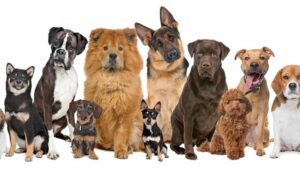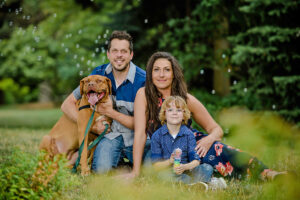Table of Contents
ToggleThe Canine Companion
The bond between humans and dogs is an ancient one, a testament to the profound connection we share with these sentient beings. Bringing a dog into your life is a momentous decision, one that promises unwavering companionship, effervescent joy, and a responsibility to provide them with the best possible care. This comprehensive guide aims to demystify the intricacies of canine husbandry, offering practical advice and insightful perspectives to ensure a harmonious and fulfilling relationship with your furry friend.
Choosing the Right Breed: Selecting the appropriate breed is paramount to a successful canine-human partnership. It requires careful consideration of various factors.
A. Lifestyle Considerations: Your lifestyle plays a pivotal role in determining the ideal breed. Are you an avid outdoors person seeking an energetic companion for arduous hikes? Or do you prefer a more tranquil existence, necessitating a calmer, less demanding breed? Aligning your lifestyle with a breed’s inherent predispositions is crucial.
B. Breed Temperaments: Each breed possesses unique temperamental traits. Some are inherently playful and exuberant, while others are more reserved and dignified. Researching breed-specific temperaments will help you choose a dog whose personality complements your own.
C. Size and Space Requirements: Consider the size of your living space. A large, boisterous breed may not thrive in a confined apartment, while a smaller breed might be more adaptable.
Setting Up Your Home for a Dog
Preparing your home for a new canine resident is essential for their safety and comfort.
A. Creating a Safe Zone: Designate a specific area as your dog’s sanctuary. This could be a comfortable bed in a quiet corner or a crate that provides a sense of security.
B. Essential Supplies: Gather essential supplies such as food and water bowls, a leash and collar, bedding, toys, and grooming tools before your dog arrives.
C. Houseproofing Your Space: Remove any potential hazards such as toxic plants, electrical cords, and small objects that could be ingested. Secure any fragile items that could be knocked over.
Nutrition and Feeding
Proper nutrition is the cornerstone of canine health and well-being.
A. Understanding Canine Dietary Needs: Dogs require a balanced diet consisting of proteins, carbohydrates, fats, vitamins, and minerals.
B. Choosing the Right Food: Select a high-quality dog food that is appropriate for your dog’s age, breed, and activity level. Consult with your veterinarian for personalized recommendations.
C. Establishing a Feeding Schedule: Establish a consistent feeding schedule to regulate your dog’s digestive system.
Exercise and Mental Stimulation
Physical and mental stimulation are vital for a dog’s overall health and happiness.
A. Physical Activity Requirements: Different breeds have varying exercise needs. Ensure your dog receives adequate physical activity through walks, runs, or playtime.
B. Enrichment Activities: Provide mental stimulation through interactive toys, puzzle feeders, and training exercises.
C. The Importance of Playtime: Playtime strengthens the bond between you and your dog and provides an outlet for their natural instincts.
Grooming and Hygiene
Regular grooming is essential for maintaining your dog’s coat and overall hygiene.
A. Coat Care and Brushing: Brush your dog’s coat regularly to remove loose hair and prevent matting.
B. Bathing and Nail Trimming: Bathe your dog as needed, using a dog-specific shampoo. Trim their nails regularly to prevent overgrowth.
C. Dental Hygiene: Brush your dog’s teeth regularly to prevent dental disease.
Basic Training and Socialization
Training and socialization are crucial for developing a well-adjusted and obedient dog.
A. Positive Reinforcement Techniques: Utilize positive reinforcement methods such as treats and praise to encourage desired behaviors.
B. Housebreaking and Crate Training: Establish a consistent housebreaking routine and consider crate training for added security and comfort.
C. Socializing Your Dog: Expose your dog to various people, places, and situations from a young age to promote socialization.
Healthcare and Wellness
Regular veterinary care is essential for maintaining your dog’s health and preventing illness.
A. Regular Veterinary Checkups: Schedule regular checkups with your veterinarian for preventative care and early detection of health issues.
B. Vaccinations and Parasite Prevention: Ensure your dog is up-to-date on vaccinations and receives appropriate parasite prevention.
C. Recognizing Signs of Illness: Be vigilant for any signs of illness in your dog, such as changes in appetite, lethargy, or unusual behavior.
Understanding Dog Behavior
Comprehending canine communication is key to a harmonious relationship.
A. Canine Communication: Dogs communicate through a complex system of body language, vocalizations, and scent marking.
B. Body Language and Signals: Learn to interpret your dog’s body language to understand their emotional state and intentions.
C. Addressing Behavioral Issues: Address any behavioral issues promptly with the guidance of a qualified professional.
The Importance of Bonding
Nurturing a strong bond with your dog is the most rewarding aspect of canine ownership.
A. Building a Strong Relationship: Invest time in building a strong relationship with your dog through positive interactions and shared experiences.
B. Spending Quality Time: Dedicate quality time to interacting with your dog through play, walks, and cuddles.
C. Understanding Your Dog’s Needs: Strive to understand your dog’s individual needs and provide them with a loving and supportive environment. This ensures a symbiotic and fulfilling relationship.






![The Ultimate Guide to Road Tripping with Your Dog [2025 Update]](https://bellabeanupdate.com/wp-content/uploads/2025/05/pexels-photo-1143369-300x209.jpeg)

























